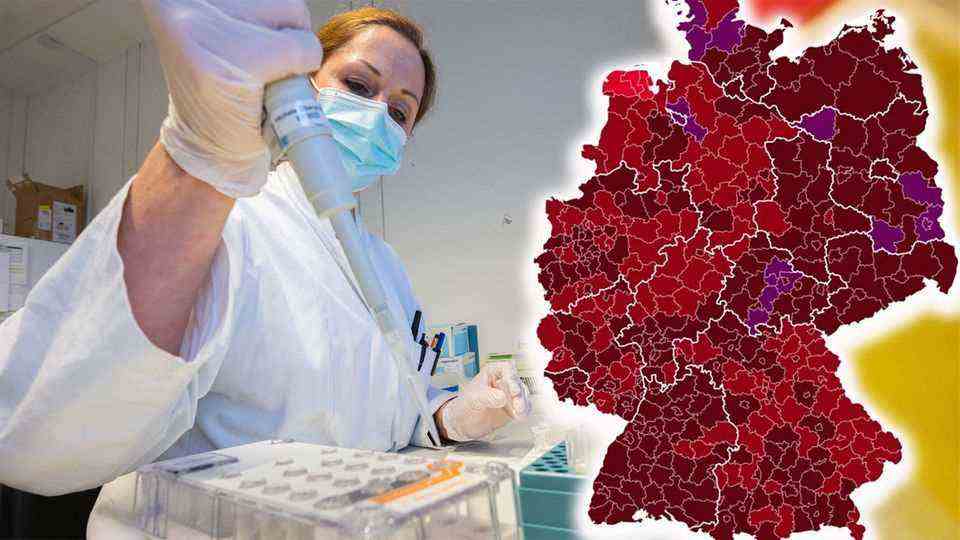Coronavirus pandemic
Spain celebrates Epiphany – while Omikron brings the country new record incidences
The people of Pamplona celebrate the Three Kings with a parade. Concern about the corona virus is low despite the high numbers.
© Alvaro Barrientos / DPA
In Spain, the coronavirus numbers are going through the roof despite the high vaccination rate. But while other countries have long been pulling the emergency brake, the government in Madrid is taking a “close your eyes and through” course.
Crowded together, people in Madrid cheer for the dazzling parade. Magnificently decorated floats pass by, acrobats in glitter costumes show their shows and sweets fly into the crowd. In Spain, Epiphany is more important than Christmas – because here the “Reyes Magos”, the three wise men, bring the presents. While the traditional parades, the so-called “cabalgatas”, were canceled last year due to Corona, the celebrations are in full swing this year.
The country now has the highest incidence in all of Europe. In mid-October this was still 18, now it is 1348. Despite the high vaccination rate, the Omikron wave causes the number of infections to rise vertically. The health authorities emphasize that the situation in the hospitals is under control. But the question is how much longer.
Coronavirus record numbers: how did it come about?
The highly contagious Omikron variant quickly gained a foothold. This was reported on December 13th Ministry of Health just 36 cases, currently 43 percent of the sequenced samples can be traced back to the new variant. The number of unreported cases is probably much higher, however, as the country evaluated fewer samples over the holidays. In addition, many people only carry out rapid tests at home and often do not report positive results, as the Spanish newspaper “El País“reported. Even contact persons of infected people do not have to be officially reported and therefore do not have to be tested without symptoms.
What is certain is that the Omikron variant is largely responsible for the sudden increase in infection. But the scenario already began to emerge with the delta variant. In contrast to Germany, the number of cases in Spain did not decrease in the meantime, but “two waves in one” formed, as the computer biologist Clara Prats “El País“explained.” In the fall the curve rose bit by bit, as if in slow motion and with some leeway to react. But then suddenly Omikron appeared and changed everything from one day to the next. “
Winter travel in Corona times: These rules apply in other countries
15 images
Spain’s strategy: close your eyes and get on with it
Another reason for the exploding numbers is likely to be the relaxed corona policy. After Spain had made rapid progress with vaccinations over the past summer, the government in Madrid had lifted almost all measures. Even when infections increased again at the beginning of December, politicians saw no reason to expect new restrictions from the population. On the contrary, it even relaxed the isolation rules: Anyone infected with the corona virus only has to be in quarantine for seven days instead of ten.
“We have to live with the virus,” said Prime Minister Pedro Sánchez – true to the motto: close your eyes and get on with it. Shortly before the holidays, people crowded the shopping streets, in packed restaurants and clubs – and helped the virus on its way.
Spain is now like a patchwork quilt again. While in some regions such as Catalonia the 3G rule, curfew and sometimes nocturnal restrictions on going out have been reintroduced, in others – such as Madrid or Andalusia – there are hardly any restrictions. It remains to be seen how effectively the nationally reintroduced mask requirement outdoors will work.
Instead, the country has so far relied on its good vaccination rate, which is one of the highest in Europe. More than 90 percent of citizens over the age of 12 have been vaccinated twice – around a third of all children between five and twelve have already received the first dose. The booster campaign is also running at full speed, although, according to experts, the quotas are still too low, especially for the elderly at risk.
Impending staff shortages in hospitals
Despite the high number of infections, the Spanish Ministry of Health considers the situation in the hospitals to be controllable in view of the successful vaccination rate. Initial studies indicate that the vaccination – and especially the booster – in most cases ensures symptom-free infection or at least a milder course of the disease. “Only very few infected people have to go to the intensive care unit,” said President Félix Bolaños.
The latest numbers show, however, a worrying trend: Currently, almost 13,000 corona patients are being treated in hospitals, more than in the previous waves. 1983 are in intensive care – twice as many as a month ago. Although the hospitalizations are still a long way from the catastrophic conditions in January 2021, concerns about the increasingly thinner staffing levels are growing. More and more doctors and nurses are absent because they are infected themselves or have to be in quarantine as a contact person.
This means that even if the omicron wave, according to experts’ calculations, is likely to peak in mid-January, the health care system could be extremely stressed. “The decline will likely be rapid, as will the increase, but the hospitals are facing very tough weeks,” warned Álex Arenas, professor of computer science and mathematics at the University of Tarragona, in an interview with “El País“.
The situation in Spain shows that the omicron variant is creating chaos in its own way. Although the wave in countries with high vaccination rates is unlikely to cause the intensive care units to overflow, it will nevertheless cause tension in the critical infrastructures. For the Spaniards, it remains to be hoped that the “Reyes Magos” will not bring more infections with them in addition to gifts on Epiphany.


